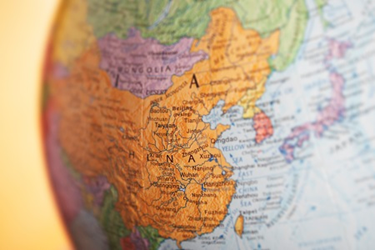Should You Look At China For Your Next Clinical Trial?

By Ed Miseta, Chief Editor, Clinical Leader

At the 2018 DIA Annual Meeting in Boston, one of the topics I heard a lot of discussion around was China. Once known as a low-cost producer of generic drugs and pharmaceutical APIs and excipients, the country is now stepping up the quality and timeliness of its manufacturing to attract the attention of pharmaceutical companies.
Another area in which China is making progress is in attracting clinical trials. Recent regulatory reforms have shortened the timeline to approval and increased investment in the country. I spoke to three experts to learn how the regulatory changes are impacting trials, and why China should be considered for future trials. They are:
- Carol Zhu, SVP and managing director, DIA
- Lingshi Tan, Ph.D., founder, chairman, and CEO, dMed Company Limited
- Chang Lee, M.D., DrPH, VP, PAREXEL Consulting APAC
Note: The national drug administration of China, formerly known as the China Food and Drug Administration (CFDA), recently changed its English name to the National Medical Products Administration (NMPA). As such, this article refers to the administration as “NMPA” throughout, regardless of whether the reference is to past, present, or future activities.
Ed Miseta: What are some of the significant changes occurring in China that U.S. pharma companies need to be aware of?
 Carol Zhu: NMPA instituted a new policy in 2018 that changed the clinical trial authorization (CTA) official review and approval process to a 60-day waiting period. This is now very similar to the FDA’s investigational new drug (IND) period. NMPA is also now able to accept clinical data from international clinical trials for new drug registration applications (NDAs).
Carol Zhu: NMPA instituted a new policy in 2018 that changed the clinical trial authorization (CTA) official review and approval process to a 60-day waiting period. This is now very similar to the FDA’s investigational new drug (IND) period. NMPA is also now able to accept clinical data from international clinical trials for new drug registration applications (NDAs).
Additionally, 48 foreign-made drugs for urgent unmet medical needs have been listed for public review. These drugs have been approved outside of China but not yet in China. As a result, these drugs can now be approved for registration without clinical trials being conducted in China.
 Dr. Lingshi Tan: There have been significant regulatory changes, implemented to close the timing gap between foreign countries and China for NDA approval. ICH guidelines have been adopted as the standard for innovative drug development in China. As Carol noted, the CTA approval process has been shortened to 60 working days. One of the more significant changes is foreign data being accepted for registration if there is no ethnic difference in the patient population. However, a post-approval monitoring commitment may be required.
Dr. Lingshi Tan: There have been significant regulatory changes, implemented to close the timing gap between foreign countries and China for NDA approval. ICH guidelines have been adopted as the standard for innovative drug development in China. As Carol noted, the CTA approval process has been shortened to 60 working days. One of the more significant changes is foreign data being accepted for registration if there is no ethnic difference in the patient population. However, a post-approval monitoring commitment may be required.
As a result of these changes, market authorization deals between China’s multinational corporations and local pharma companies are increasing. One of the biggest deals was in 2017 when Beigene acquired the China commercial authorization of Celgene products, as well as the commercial team in China. We also see market access expanding rapidly due to rising incomes, expanding reimbursement by public and private insurance, and an expanding healthcare infrastructure. Innovative drugs can now be listed in the National Reimbursement Drug List (NRDL) through price negotiation with the government. Drug distribution via e-commerce, while still small, is expanding rapidly and attracting major e-commerce firms. And the impending launch of more than a dozen locally produced biosimilar drugs will greatly expand access to biologics in China.
 Dr. Chang Lee: Carol and Lingshi correctly point out several of the sweeping reforms that we have seen over the past two years. I would add that the continuous integration of information technology and biotechnology has made capital continue to be optimistic about the prospects of China's biotechnology field.
Dr. Chang Lee: Carol and Lingshi correctly point out several of the sweeping reforms that we have seen over the past two years. I would add that the continuous integration of information technology and biotechnology has made capital continue to be optimistic about the prospects of China's biotechnology field.
Biotechnology is one of the most popular venture capital fields. McKinsey's data shows that in 2017, Chinese startups' private equity/risk funds raised nearly $40 billion, of which the healthcare industry's total venture capital was $12 billion. In 2016, that figure was $5.3 billion, with just $2.6 billion going to drug developers. Additionally, Chinese drug companies raised more than $3.1 billion from equity markets in 2017, and billions more from licensing agreements. China Renaissance, a Beijing-based investment bank, estimates $7.8 billion was invested in biotechnology in the first half of 2018. It appears 2018 will break the record set last year.
The State Council has also set up a new bureau to reform market access and drug reimbursement in 2018. The pricing, bidding process, and health insurance policies for medicines in China soon will be managed by the newly established Medicare Insurance Bureau.
Miseta: How has that timeline to get a trial approved in China been shortened so dramatically?
Lee: A combination of factors has created a favorable regulatory environment. Those factors include unmet medical needs, the expanding middle class, stronger belief in innovation economics, greater in-flows of investment, and the central government’s policies. In China, the government’s support is one of the most important components to make it happen, which can come in the form of overall strategy and policy, new leadership in NMPA, organization changes, investment, new FTEs, the talent pool, education and training program, and more. Since the CDA reforms kicked off in 2015, the agency has released more than 250 guidance documents, policies, and opinions aimed at improving the regulatory system. That amounts to a new regulatory document released every four days.
A big increase in the number of reviewers at the China Center for Drug Evaluation (CDE), from 100 in 2015 to more than 600 in 2018, has significantly reduced the application backlog from an average of 4.49 years in 2015 to just 53 days in 2018. All of this is going to help China become a much stronger competitor in the drug discovery and development arena.
Tan: I agree the increase in the number of CDE reviewers has had a great positive impact. The process has been helped with the pre-IND and pre-NDA meetings now occurring prior to CTA and NDA submissions. A huge backlog of submissions that contained poor data quality were withdrawn by the sponsors, which reduced the number of applications in the queue.
Lee: We have to realize that this is something that had to be done. China is the world’s second largest pharmaceutical market. With an aging population (10 percent of its 1.38 billion citizens over 65) and an expanding middle class, that market share will only continue to grow. The Chinese government would like to end “medical tourism,” in which well-off Chinese patients travel to the U.S., Europe, or India to seek innovative treatments. China wants to meet the pharmaceutical needs of Chinese patients with Chinese-approved drugs.
Moving forward, innovation and quality will be key drivers for future growth in the Chinese pharmaceutical industry. The Chinese government and companies are committed to becoming a major player in new drug discovery and development, and they realize these changes had to be made. This marks a fundamental shift from China being the world’s center for low-cost excipients and APIs. China must move rapidly up the global value chain, upgrade its technology position in AI and Big Data, and set the pace in an age of regenerative medicine, precision medicine, and gene therapy.
Miseta: Why are these changes happening now?
Zhu: I think it’s due to several reasons. First, the national strategy on deepening China’s political and economic reforms, especially to reduce the unnecessary and burdensome government control process.
It’s also being done to meet the public’s need and demand for new treatments to combat life-threatening diseases. China’s State Council has announced a national strategic direction (Healthy China 2030 Planning Outline) that promises to create a healthier China by the year 2030. This policy document sets the current direction for long-term reform and industry development based on four key principles: Health First, Reform and Innovation, Science and Improvement, and Fairness and Equity. And let’s not forget that the industry, for years, has been advocating for a more open market in China.
Tan: I would add one additional point. The primary challenge in Chinese healthcare policy over nearly seven decades has been to provide the best available care to its population while balancing that goal with the economic realities of the country’s economic, scientific, and industrial resources. This latest wave of regulatory and commercial reforms is designed to leverage China’s rising wealth and scientific resources to meet the population’s demand for rapid access to innovative therapies and affordable quality generics. At the same time, the hope is to make China an integral contributor to the global drug industry, commensurate with its position as the world’s second largest drug market.
Miseta: Are we beginning to see improvements in quality?
Tan: Yes. In July 2015, Chinese regulators began to mandate several processes such as self-assessment and on-site inspection, which are now required for NDA approval. There are penalties in place for noncompliance with the mandate. This was done to improve the quality of data generated in clinical trials. GMP manufacturing standards have also been progressively tightened and enforcement has increased. At the same time, a growing number of Chinese manufacturers seek to comply with U.S. GMP in order to enter export markets for both API and finished formulations with both drugs and biologics.
Zhu: I agree we are seeing improvements in quality. As a result of the self-assessments Lingshi mentioned, more than 1,500 drug applications were designated for self-assessment and more than 50 percent of applications were withdrawn voluntarily after internal evaluations by companies revealed data integrity concerns. On-site inspections were enforced for the rest of the applications. In addition to improving clinical trial quality, this campaign also helped reduce the backlog of applications pending review. There were 30,000 applications in September 2015. By March 2017 that number had fallen to just 8,000 applications.
Lee: Much has been done, but we need to do more. The most recent report on sales of substandard vaccine in China sparked widespread public anger and multiple probes, including the resignation of Jingquan Bi, the former director of NMPA. This indicates that pharmaceutical companies in China have made progress but still have a long way to go to achieve a high-quality reputation in global market.
One historical regulatory deficiency in China is a separation of drug development from drug manufacturing. Many companies do not strictly follow established manufacturing processes filed in the NDA or ANDA applications. They also fail to file scale-up amendments after approval and do not strictly record data. The U.S. FDA issued five warning letters to Chinese pharmaceutical manufacturers in 2014, and that number increased to 22 in 2017. Those companies were placed on an import blacklist. Over the last two years, Chinese companies have received more warning letters than their Indian counterparts.
NMPA has been focused on improving new product approval, but its effort to enhance GMP oversight has not matched that same level of success. For example, NMPA released a 2016 draft guidance on auditing and verification on manufacturing process post-approval. It received strong resistance from companies that claimed the draft guidance was not science-based. We are observing the improvements in companies that pass the strict on-site inspection and anticipate the NMPA will take a stronger position on GMP/GCP compliance moving forward.
Miseta: The population of China and the medical needs of its citizens make it a logical place to conduct trials. What will these changes mean for pharma companies hoping to conduct trials there?
Zhu: There are many diseases that are prevalent in China, and it is becoming more essential for sponsor companies to make China a key part of any clinical development strategy.
To be effective conducting trials in China, sponsors should engage China and set up a development strategy as early as possible. End-to-end planning is required, and sponsors should attempt to align the clinical development and post-approval commercialization functions. To understand the China market, companies must build up internal knowledge on the pharma industry in China or partner with reliable local companies that have strong expertise. I also recommend monitoring healthcare and regulatory reforms closely, as China is rapidly building new capabilities and continues to evolve its regulatory framework. In order to win in China, a drug company’s China portfolio strategy must increasingly focus on bringing truly innovative therapies that address local unmet medical needs. In China that means certain cancers, diabetes, and hepatitis B and C.
Lee: We are seeing more and more global companies considering China as the first tier of countries in which to conduct new product development. As of Aug. 19, 2018, there were 9,052 clinical trials registered in China. This is a big change from five to seven years ago, when China was one of the last countries in which a foreign biopharmaceutical company would consider seeking approval. The gains for foreign companies have been quite dramatic.
In March 2017, AstraZeneca’s osimertinib (Tagrisso) for non-small cell lung cancer was the first product approved under the newly revamped Priority Review mechanism. It flew through the NMPA in seven months, a record pace that more than halved the historic three-to-five-year lag between the drug’s approval in the U.S. (in late 2015) and Japan (in early 2016) and China.
In late April 2018, NMPA utilized its new Conditional Approval mechanism to grant marketing authorization to Merck’s Gardasil 9 human papilloma virus (HPV) vaccine after a mere nine days of review. The NMPA considered foreign clinical trial data in its review.
Despite its commitment to harmonization and standardization vis-à-vis the U.S., Europe, and other countries, China still presents unique challenges. As Carol noted, developers will need a well-researched strategy and must begin thinking about China at the start of product development, not at the middle or end.
By including Chinese subjects starting in Phase 1, it’s possible to detect ethnic variations compared to Westerners early on. These differences can include drug metabolism, absorption, distribution, elimination, safety, and tolerability. Collecting this data earlier provides a significant advantage because the risk/benefit ratios of investigational compounds can differ measurably between Chinese populations and the rest of the world. Plus, despite reforms, the accessibility of clinical research sites in China is still constrained. Two ways that sponsors and CROs can address this problem are by partnering with Chinese universities to conduct Phase 1 studies and conducting “ethnobridging” studies on Chinese populations living outside of China.
Tan: I would add that China has a huge cancer patient population pool. For instance, new lung cancer patients in 2015 were around 700,000 and the number is expected to reach 1 million by 2025. That is more than one-third of the global population of lung cancer patients. China can contribute study subjects efficiently, in part due to the relatively higher proportion of treatment-naïve patients. However, companies still face several hurdles in oncology trial recruitment, including a low early diagnosis rate and an insufficient number of capable sites, investigators, and experienced CROs.
Miseta: How big an impact does pharma have on the Chinese economy?
Lee: Estimates indicate that China has between 3,000 and 6,000 pharmaceutical manufacturers in addition to 14,000 pharmaceutical distributors. Chinese manufacturers also account for 40 percent of the global production of active pharmaceutical ingredients and exports, which was worth $29 billion in 2017. China was the world's second-largest pharmaceutical market in 2017 and was also the biggest emerging market for pharmaceuticals.
NMPA approved 35 new drugs in 2017, after approving just five in 2016. The health authorities added more than 300 drugs to the National Reimbursement Drug List. I believe China's pharmaceutical and healthcare landscape will continue to evolve over the coming years with more drugs in the market, more drugs reimbursed, more patient access through online services, more investment from billions of dollars of private-equity and venture-capital funding, and continuing innovation by Chinese companies. There are more than 800 molecules in the development pipeline in Chinese biotech companies as well as those companies aggressively licensing in and out of China. China’s tech and finance leaders, such as Baidu, Ping An, and Tencent, are also investing billions dollars in launching AI and Big Data–based innovations. A few bumps in the road could still result from medicine pricing, intellectual property protection, and an escalation of a U.S.-China trade war.
Tan: The total revenue of the pharma industry in China continues to grow rapidly. The compound annual growth rate (CAGR) from 2007 to 2016 was 19 percent annually. The pharma industry plays a critical role in GDP due to the increasing domestic and international needs of the pharma market. Overall healthcare expenditures reached 6.23 percent of GDP in 2016 and is anticipated to reach 7 percent by 2020. This is still well below most European markets (10 percent to 12 percent) and is far below the U.S. (18 percent). That leaves considerable room for sustained rapid growth in China.
Zhu: A figure I saw from Frost & Sullivan noted China's biopharmaceutical market grew from $62.7 billion yuan in 2012 to $152.7 billion yuan in 2016, which is a CAGR of 24.9 percent. Furthermore, it is expected to grow at a CAGR of 16.4 percent from 2016 to 2021 and reach $326.9 billion yuan by 2021. This will bring tremendous opportunities for Chinese biopharmaceutical participants.
